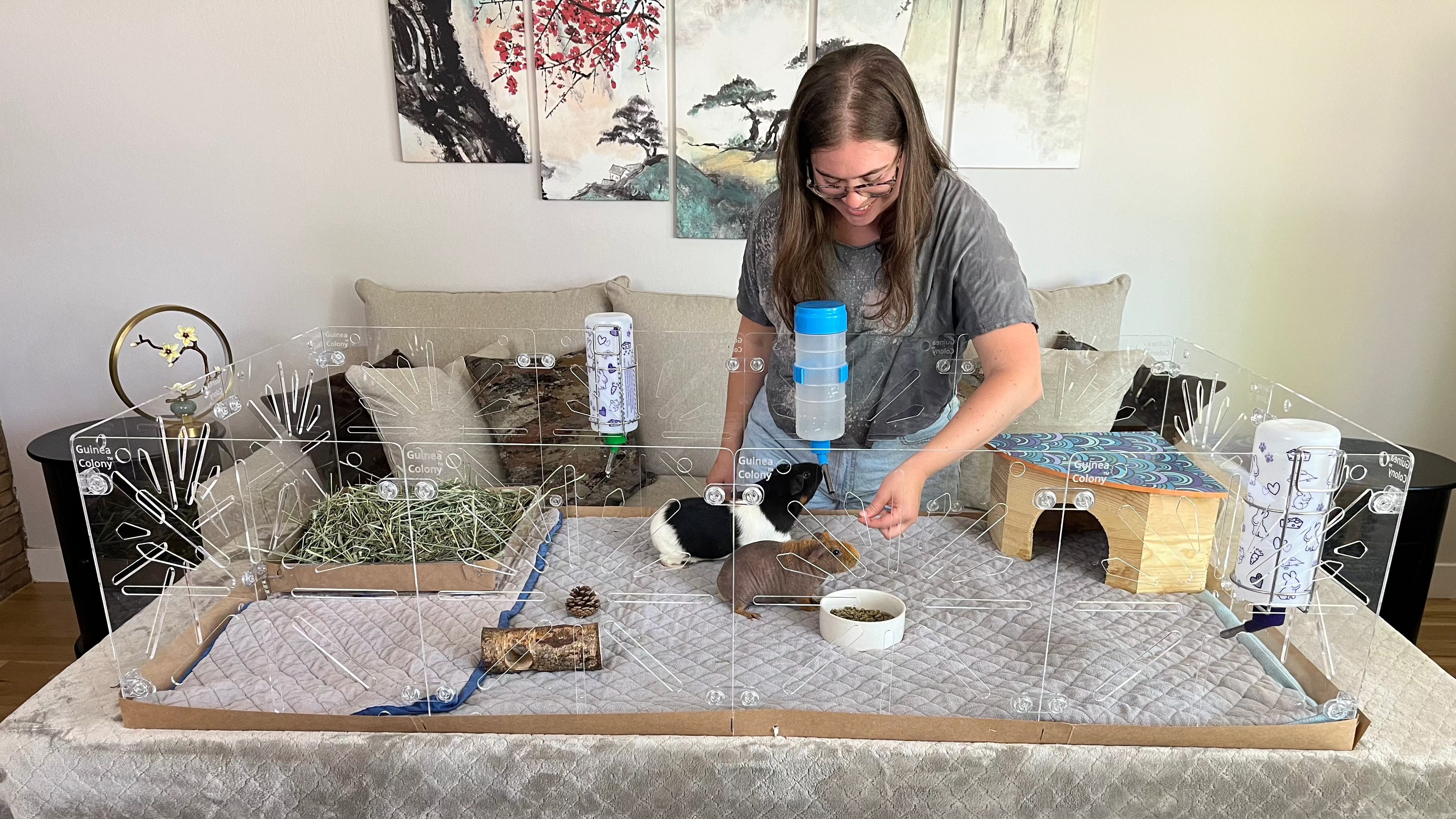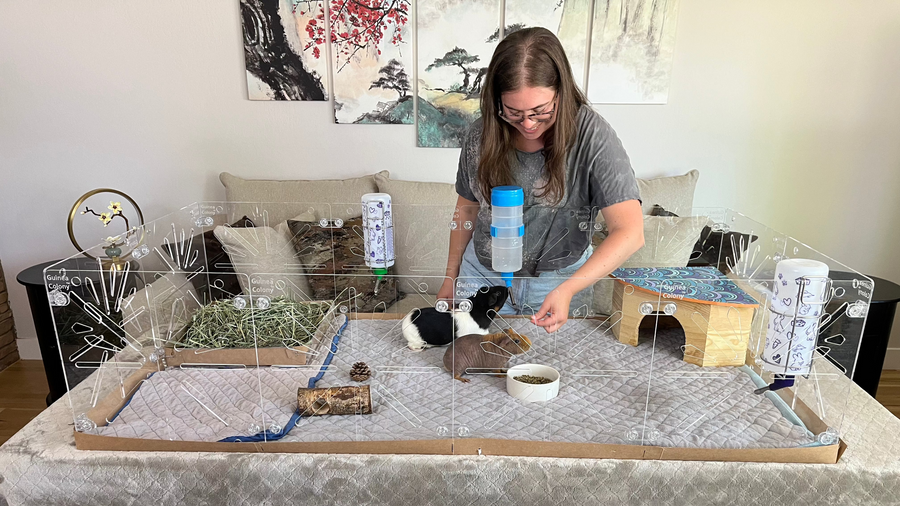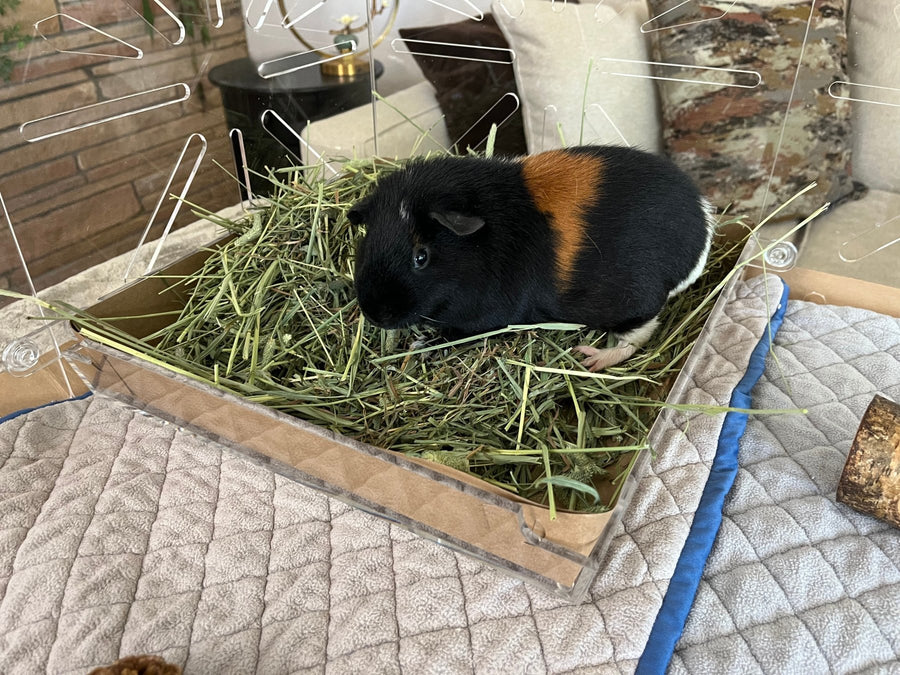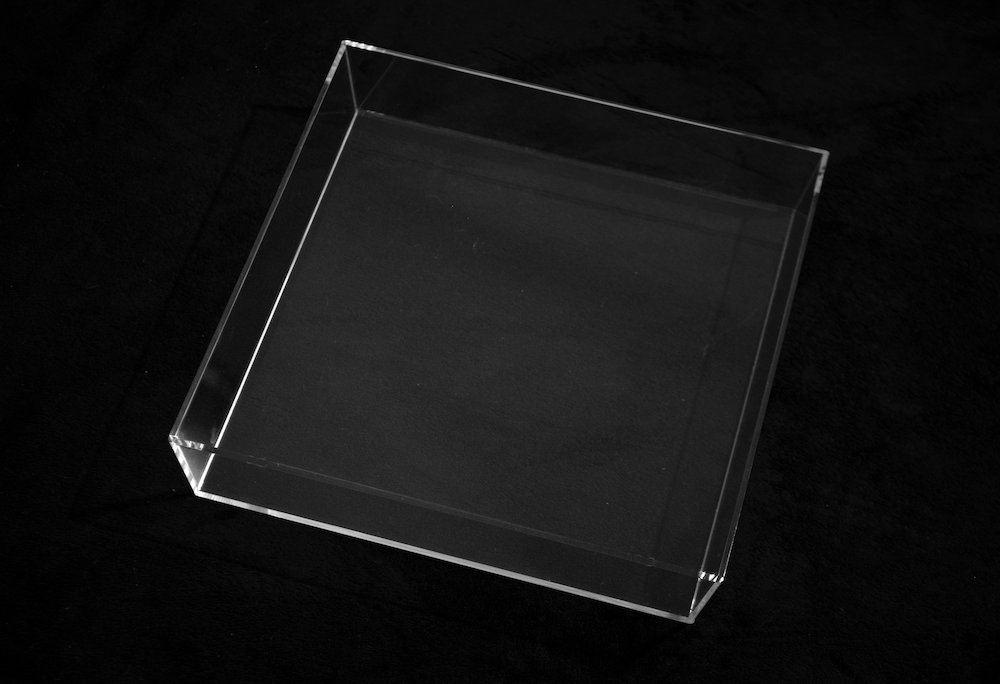Why Does Ammonia Build Up in Guinea Pig Cages (and How to Prevent It)?
Let’s be real — guinea pig cages can get smelly, fast. But that sharp, nose-stinging odor isn’t just unpleasant for you. It’s often ammonia, a gas that forms when urine breaks down, and it can be harmful to your piggies if it builds up.
The tricky part? Ammonia doesn’t just hang around at the bottom of the cage. It actually rises, which means your guinea pigs are breathing it in if there isn’t enough airflow.
In this post, we’ll cover what ammonia is, why airflow is so important, and how you can keep your colony breathing fresh, clean air.
What Is Ammonia and Why Does It Matter?
Ammonia is a gas released when guinea pig urine starts to break down. The smell alone can be enough to tell you it’s there, but the real issue is what it does to your guinea pigs:
-
Irritates the lungs and throat
-
Makes eyes water and sting
-
Can worsen or trigger respiratory illness
Because guinea pigs are small and spend most of their time close to the ground, they’re much more affected by ammonia than we are. If you can smell it, chances are it’s already too strong for them.
Does Ammonia Rise or Sink?
Here’s the surprising bit: ammonia is lighter than air, so it rises upward instead of sinking down.
That means it doesn’t just linger in the bedding — it spreads up through the entire cage. Without proper airflow, the gas collects and stays right where your guinea pigs are eating, resting, and breathing.


How Much Airflow Does a Cage Really Need?
Guinea pigs need a balance: ventilation without drafts.
Too little airflow? Ammonia builds up, and your pigs breathe in stale, irritating air.
Too much airflow? A constant breeze or fan can make them uncomfortable or even sick.
A good cage design:
-
Has plenty of open sides or breathable panels
-
Allows air to circulate naturally through the habitat
-
Avoids completely solid walls (which trap odor)
-
Keeps your pigs safe from direct cold drafts
Think of it like this: if you wouldn’t want to sit in a room that feels stuffy, your guinea pigs don’t either.
Signs Ammonia Might Be a Problem
Watch for these red flags in your piggies:
-
More sneezing or watery eyes than usual
-
Wheezing or noisy breathing
-
Avoiding certain spots in the cage
-
A smell that lingers even after a quick clean
If you notice any of these, it’s time to step up cleaning and check the airflow.

Tips to Keep Ammonia Levels Low
Good ventilation starts with good maintenance. Here’s what helps most:
-
Daily spot cleaning – Scoop out wet bedding and replace it.
-
Weekly full cleans – Swap out all bedding, wipe down surfaces, and refresh the setup.
-
Absorbent bedding – Use fleece liners or paper-based bedding that wick away moisture quickly.
-
Smart layout – Position water bottles and hides so they don’t create damp, closed-off corners.
-
Proper airflow – Make sure your habitat lets air move through naturally without creating cold drafts.
And don’t forget: more pigs means more pee. If your colony grows, you may need to expand their habitat so airflow and cleanliness can keep up.
Wrapping Up: Fresh Air = Healthy Piggies
Ammonia is invisible, but it’s no small thing. Since it rises into the same air your guinea pigs breathe, ventilation is just as important as bedding choice and cleaning routine. With the right balance of airflow and care, your piggies will enjoy a healthier, fresher, and much more comfortable home.









Leave a comment